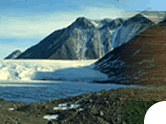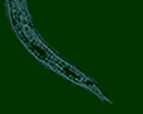Global Litter Invertebrate
Decomposition Experiment
MacArthur
Agro-Ecology Research Center
(a Division of Archbold Biological Station), USA
Site Manager
Dr.
Patrick J. Bohlen
Research Biologist
MacArthur Agro-Ecology Research Center
(A division of Archbold Biological Station)
300 Buck Island Ranch Rd.
Lake Placid, FL 33852
Telephone: (+1) 863 699 0242 x22
Fax: (+1) 863 699 2217
Site Description
The MacArthur Agro-Ecology Research Center is the site of
a unique program to assess the effects of cattle ranching
on the native ecosystems of south central Florida. The Center
is a working cattle ranch with a herd of approximately 3,000
cattle included approximately 2,800 cross breed brood cows
used in cow-calf production, which is the dominant land use
in the region. The ranch is on a long-term lease to Archbold
Biological Station from the John D. and and Catherine T.
MacArthur Foundation. The climate at the site is subtropical
with distinct wet and dry seasons and an average annual rainfall
of ~1,300 mm with large inter-annual variability. Nearly
75% of the annual rainfall occurs during the wet season months
of May through October. Mean annual temperature is 22‰C
with average maximum summer temperatures of 33‰C.
Soils at the experimental sites are seasonally wet, poorly
drained find sands with pH ranging from slightly to strongly-acidic.
More than 450 mostly seasonal isolated wetlands occupy roughly
6% of the ranch area. Most of these wetlands have periods
of standing water in the wet season (May-October) but dry
out in the dry season (November-April).
Site Location
The site is located in south central Florida, USA, due
west of the north edge of Lake Okeechobee (27‰9.716
N, 81‰12.028 W). The dominant land use in the region
is agriculture with beef cattle cow-calf production is
the most extensive land use. Natural vegetation was dry
and wet prairies, flatwoods and wetland sloughs. Major
hydrologic modifications during the past 50 years have
reduced the wetland coverage in the region substantially.
Site
Area
Site area is 4,170 ha.
Site
Elevation
Site elevation is 8.0-9.5 m above sea level.
Annual Rainfall
Annual rainfall is about 1,300 mm.
Annual Temperature
Mean annual temperature is 22 degrees Celcius.
Soil
Soils at the site are hyperthermic poorly drained fine
sands and include Spodosols, Alfisols and Histosols.
Native
Forest/Vegetation Types
Natural vegetation types include wet prairies dominated
by native tall grasses (Andropogon virginicus, Andropogon
glomeratus, Andropogon capillipes, Panicum spp., Paspalum
laeve, Axonopus affinis) and grass marshes dominated
by maidencane (Panicum hemitomon) or sawgrass (Cladium
jamaicense). Other important wetland vegetation includes
broadleaf emergent macrophytes (Sagitaria lanceolata,
Pontederia cordata) and rushes (Eliocharis vivipara,
Juncus effusus, Scirpus spp.). Improved pastures consisting
primarily of Bahai grass (Paspalum notatum) occupy
approximately 1,500 hectares of the site, primarily on
the higher elevation areas with Spodosol soils. Scattered
woodlands or hammocks consist mainly of sabal palm (Sabal
palmetto) and live oak (Quercus virginiana).
The GLIDE experiment is being set up in a semi-improved
wet prairie pasture with cattle excluded.
Principal
Biome/Ecoregion
Ecoregion is subtropical dry and wet prairies and marshes.
Photo Gallery
|









